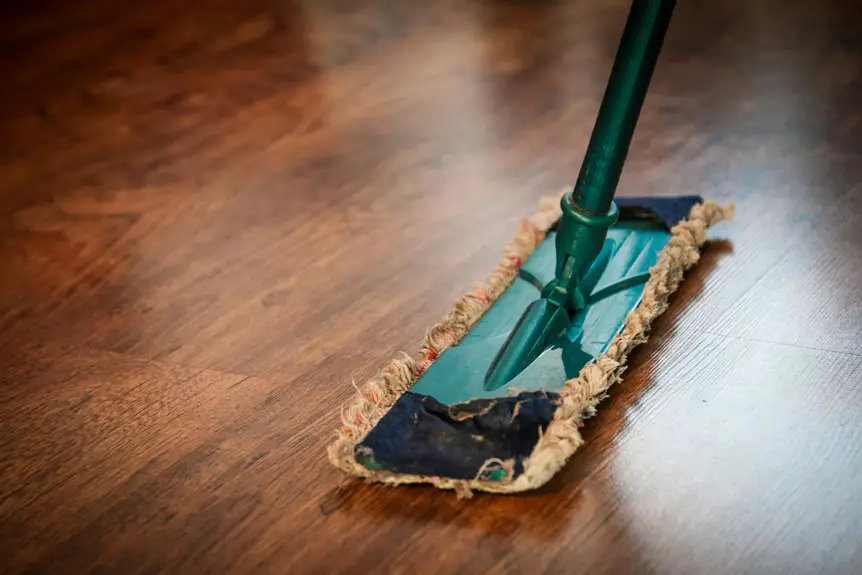To keep your vertical mouse in top shape, start by unplugging it or removing batteries. Wipe the surface with a damp microfiber cloth, and use a soft brush for hard-to-reach areas. Check for debris regularly and maintain the mouse feet's surface. If you experience issues, clean the sensor and ensure your drivers are updated. These simple steps will enhance your mouse's longevity and performance. You'll also discover more essential tips and troubleshooting methods.
Table of Contents
Key Takeaways
- Regularly unplug the mouse and wipe the surface with a damp microfiber cloth to prevent grime buildup.
- Use a soft brush or cotton swab to clean hard-to-reach areas, especially around buttons and the scroll wheel.
- Check for dust accumulation in the sensor area and clean it with a soft cloth if the mouse feels unresponsive.
- Inspect removable parts for wear and replace them as necessary to maintain optimal performance.
- Keep your mouse software and drivers updated to ensure compatibility and functionality with your operating system.
Understanding the Anatomy of Your Vertical Mouse
A vertical mouse is designed with your comfort and ergonomics in mind. Its unique shape promotes a natural hand position, reducing strain on your wrist and forearm.
You'll notice that the buttons are positioned for easy access, allowing you to click without awkward movements. The scroll wheel is typically located in a way that lets your fingers glide effortlessly, making navigation smooth.
Additionally, the palm rest area is contoured to support your hand, preventing fatigue during long hours of use. Understanding these features helps you appreciate how a vertical mouse enhances your overall computing experience.
Tools You'll Need for Cleaning
Before diving into the cleaning process, you'll want to gather a few essential tools to ensure your vertical mouse stays in top shape.
Start with a microfiber cloth; it's gentle and won't scratch the surface. You'll also need some isopropyl alcohol or a mild cleaning solution to tackle any stubborn grime.
A soft brush, like a small paintbrush or an old toothbrush, can help dislodge dirt from hard-to-reach areas. If your mouse has removable parts, have a small screwdriver handy for easy access.
Lastly, a can of compressed air is great for blowing out debris from crevices. With these tools at your side, you'll be ready to maintain your vertical mouse effectively.
Step-by-Step Cleaning Process
To keep your vertical mouse in optimal condition, follow this straightforward cleaning process. First, unplug your mouse or remove the batteries. Next, use a microfiber cloth lightly dampened with water or a gentle cleaning solution to wipe the surface. Pay special attention to the buttons and scroll wheel, as these areas can accumulate grime. For hard-to-reach spots, use a cotton swab or a soft brush.
Here's a quick reference table for cleaning frequency:
| Area | Cleaning Frequency |
|---|---|
| Surface | Weekly |
| Scroll Wheel | Bi-weekly |
| Buttons | Weekly |
| Sensor | Monthly |
| Inside Compartment | As needed |
After cleaning, let everything dry before reconnecting your mouse.
Regular Maintenance Tips
Regular maintenance of your vertical mouse can extend its lifespan and enhance performance.
Start by regularly checking the mouse for debris or dust that may accumulate around the buttons and sensor. Wipe the surface with a microfiber cloth to keep it clean.
Make sure to keep the mouse on a suitable surface to avoid unnecessary wear on the feet. If the mouse has removable parts, inspect them periodically for signs of wear and replace them as needed.
Additionally, ensure the software and drivers are up-to-date to maintain optimal functionality.
Finally, store your mouse in a safe place when not in use to protect it from accidental damage.
These simple steps can keep your vertical mouse in top shape!
Troubleshooting Common Issues
While using your vertical mouse, you might encounter some common issues that can disrupt your workflow. If your cursor isn't responding, check the batteries or USB connection. Sometimes, simply replacing the batteries can solve the problem.
If the mouse feels unresponsive or jittery, try cleaning the sensor with a soft cloth. Dust and debris can interfere with its performance.
Additionally, ensure the mouse is compatible with your operating system. If you experience lag, consider adjusting the mouse settings in your control panel.
Lastly, if buttons aren't clicking properly, inspect for any physical obstructions or dirt buildup. Regularly troubleshooting these issues will keep your vertical mouse functioning smoothly and enhance your overall productivity.
Frequently Asked Questions
How Often Should I Clean My Vertical Mouse?
You should clean your vertical mouse regularly, ideally every few weeks, to keep it functioning well. Dust and grime can accumulate quickly, affecting performance, so staying proactive helps maintain its responsiveness and your comfort.
Can I Use Disinfectant Wipes on My Vertical Mouse?
Yes, you can use disinfectant wipes on your vertical mouse. Just ensure they're not overly wet to avoid damaging internal components. Wipe gently, focusing on high-contact areas, and let it dry completely before using.
Is It Safe to Disassemble My Vertical Mouse?
Disassembling your vertical mouse can be risky. If you're not familiar with electronics, you might damage components. It's safer to clean it externally or consult a professional if you need to access the inner parts.
What Should I Do if My Mouse Stops Working After Cleaning?
If your mouse stops working after cleaning, check the connections and ensure everything's dry. Reconnect it, restart your device, or try a different USB port. If issues persist, consider seeking professional help or replacing it.
Can I Use Compressed Air to Clean My Vertical Mouse?
Yes, you can use compressed air to clean your vertical mouse. It helps remove dust and debris from hard-to-reach areas. Just ensure you hold the can upright and don't use it too close to the device.



